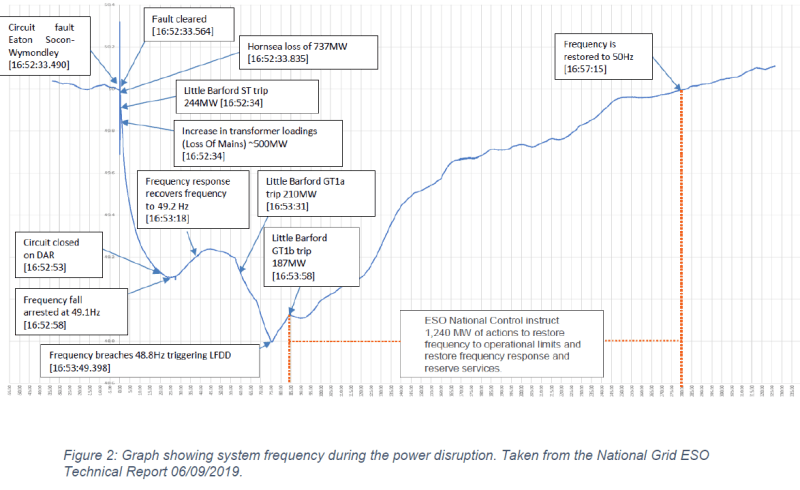1) UK Grid
Scotty is correct, but to be pedantic, he is referring to the 'British Synchronous Area'
'Synchronous area' means an area covered by synchronously interconnected Transmission System Operators (TSOs), such as the synchronous areas of Continental Europe ('CE'), Great Britain ('GB'), Ireland-Northern Ireland ('IRE') and Northern Europe ('NE') and the power systems of Lithuania, Latvia and Estonia, together referred to as 'Baltic' which are part of a wider synchronous area.
Ref: Article 2(1) of the Network Code on requirements for grid connection of generators (NC RfG)
So the UK is part of two synchronous areas, Northern Ireland being part of the Irish area, and the island of Great Britain being separate.
Any connections between synchronous zones are by HVDC links.
2) After BREXIT
Who knows? As Scotty says, the interconnectors are unlikely to be turned off, as they are commercial enterprises.
The government have checked this area out, allegedly, and did report that in the event of a Northern Ireland / Ireland network split, then there were not enough rental generating sets available to support the Northern Ireland network...
We do not know if the UK will remain associated with EU long term energy planning and if there will continue to be long term EU support for new interconnectors to GB.
3) Hornsea Windfarm trip
This seems to have been some form of software issue, now corrected...
4) Stop Press
A Mandatory retrospective change to UK 'G59' settings is being imposed for sub 5 MW sets, the larger sets having already had their settings changed.

